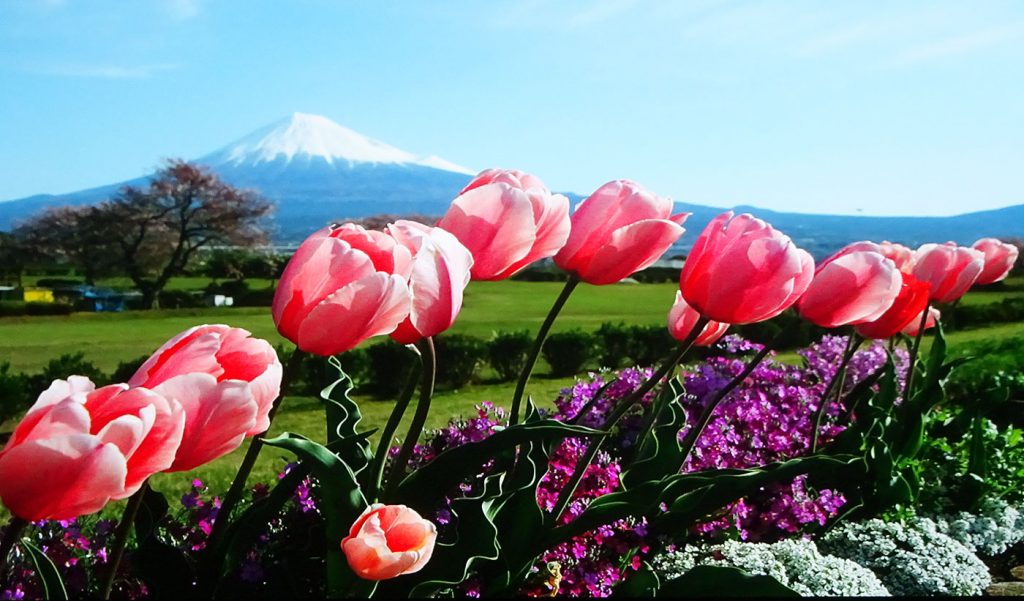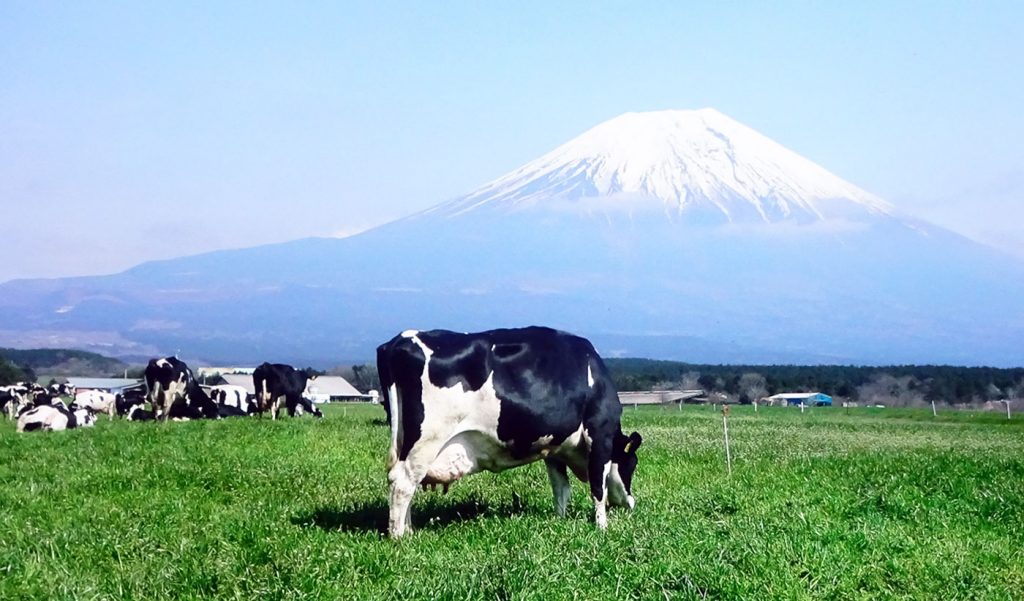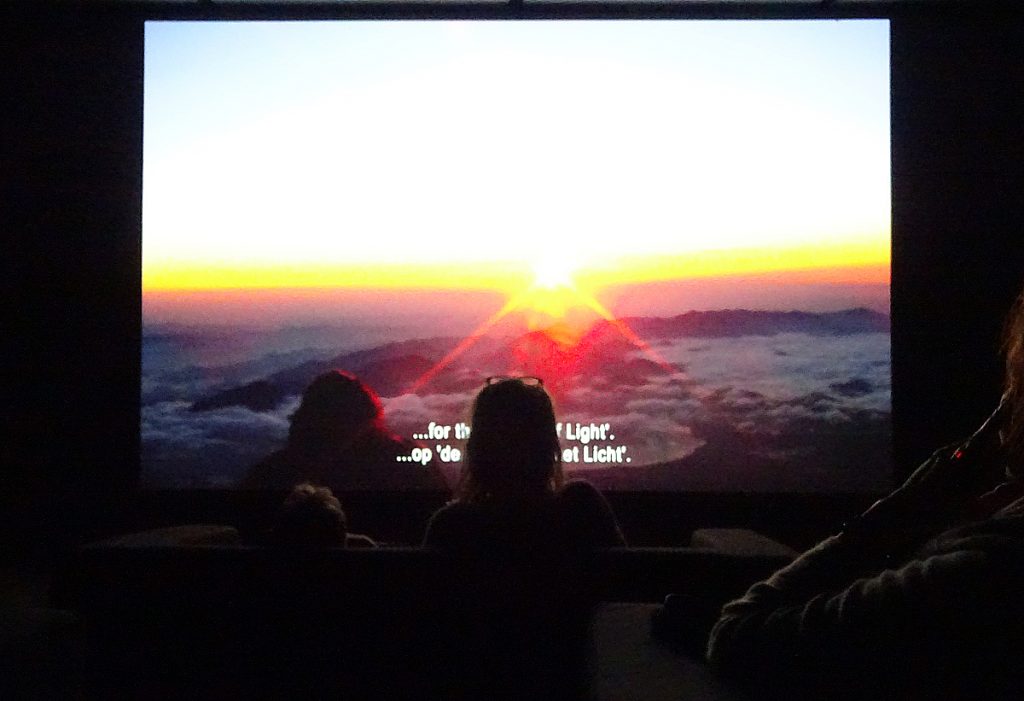The video artwork 'Ascent' is one of Fiona Tan's most recent works. Ascent is a feature-length video artwork: 1 hour and 17 minutes[ref]A work created from a special commission from the Izu Photo Museum in Japan[/ref]. You may already be familiar with this artist's work[ref]The now 50-year-old Fiona Tan is 'No ordinary Indian girl', born in Pekan Baru, Indonesia, to a family with a Chinese father and an Australian mother. She spent her childhood years in Australia. Now she has been living and working in the Netherlands for over 25 years. Having trained at the Gerrit Rietveld Academy and the Rijksakademie, Tan has become a leading internationally working artist. Her main medium is: video, film and photography, so-called 'lens-based-media'[/ref] and if not, this is an excellent opportunity.
Fiona Tan's work is special, or more like 'exceptional'. It is stilling and unsettling at the same time. Her video installations are recognisable for their layeredness and her special storytelling skills. They have almost a direct physical and psychological effect on the viewer. Tan lets you enter a new unique domain, the workings of which may have been unknown to you until then. You can experience this immersion during a visit to De Pont Museum in Tilburg.
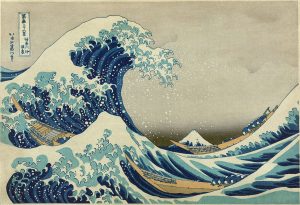
The wave
By far the most famous image of Japan is 'The Great Gulf'. The print Kanagawa oki nami-urea (1827), by Hokusai is as iconic as Mount Fuji volcano and still enjoys today, unprecedented popularity. In one way or another, everyone knows this image of the 'Great Gulf' and in doing so, it will escape many that this print actually has Mount Fuji as its main theme. Even more interesting is the Dutch origin of the colour in the painting.
Now, 150 years after Hokusai's vision of Fuji became known in Paris, Fiona Tan, has been approached by the Izu Photo Museum. They asked her to create a new work using this extraordinary mountain, Mount Fuji, as a starting point. The Izu Photo Museum itself is located at the foot of Mount Fuji and has an extensive collection of images of the mountain. With that, the starting point for this new work, titled 'Ascent', was probably immediately clear.
Making still images move
'Ascent' has evolved into a 77-minute film, a visual essay composed entirely of a montage of some 600 photographs, 'still images'. They have been carefully selected from the collection of more than 4,000 images gathered at the Izu Photo Museum. The collection reaches across all time periods and traces the culture of imagination over hundreds of years.
From this stream of 'found' still images of Mount Fuji, Tan has composed her video work through arrangement and editing. In the sophisticated scenario, we immediately recognise her hand. The moving stills and the stilled comes into motion.
That movement grips you. The flow stimulates an exploration of your memory. You become aware of the passage of time, the course of history. Parallel to the offered image, a storyline unfolds with numerous insights and here and there a cleverness. Our pace of life is slowed down. As viewers, we are laid back in an original and layered story that flows over us like lukewarm oil, then envelops and submerges us.
Icon
Numerous human characteristics are attributed to the mountain which thus makes it an icon. The video work is a study of visual culture and a tribute to both the history of imagination and photography, as it originated in Japan. How the cultures of East and West both clash and connect and blend.
The work considers the intertwining of the immediately visible and the invisible - the bygone histories - the distance and proximity that plays around this mountain. As Tan himself says: 'These thousands of images surround the mountain like a cloud - they reveal and hide Fuji at the same time.'
Light and emptiness
At one point, the voice-over explained that, according to tradition, the particularly alluring beauty of Fuji is better appreciated from a great distance, than up close. He refers to feelings of unfulfillment and homesickness. After all, after all the effort of the climb, arriving at the top, the climber realises that there is nothing, nothing beyond, but emptiness. Although emptiness has no negative connotation in Buddhist Japan, it also points to destiny and longing for fulfilment.
The ascent, making the arduous trek, constitutes the challenge, the human urge to conquer nature. Everything reshapes and renews itself in the light of sunrise -even at the summit- as a new day dawns.
Light is thus also a basic element in the work. With a thoughtful script, the viewer is taken into the circumambulation of this fascinating mountain. Dosed fable, fiction and non-fiction pass by, filtered and sifted, brought out in the accumulation of images. Set in motion again, everything comes to life (again). In this, Fuji figures unmoved, untouchable as a fixture through time.
It is to the credit of storytelling in the 'voice-over'. This consists of two monologues that run in parallel. This gives greater involvement in the unfolding images.
Mary and Hiroshi
The two commentary voices tell a fictional story. There are two storylines, alternately intersecting. The narrative voice of the character Mary, a young woman, English writer and translator, in clear English, at home in her study, acting and musing in the now. The voice of a young man in Japanese. He is the Japanese photographer Hiroshi, who recounts his efforts during his ascent of Mount Fuji during the trek itself.
It is partly elicited from the notes in his notebooks, partly as a 'live report' but from at least five years earlier. Indeed, Mary recounts Hiroshi's sudden death five years ago. Now, just as unexpectedly, she is sent a package. A box containing the lore of his photographs and notes, where she cannot help but be overwhelmed by memories.
Storytelling
Fiona Tan shows us how she masterfully masters this visual storytelling art more and more like no other, and while doing so she answers the question of whether you can turn still images, photographs, into a film again. The 'dead' still photographs are brought to life and set in motion again cinematically, provided with an appropriate 'soundtrack'. She achieves this by rhythmically slowing down or speeding up the 'loose' images, which she shows to us in a new sequence she determines, here linked together, with the addition of appropriate sounds.
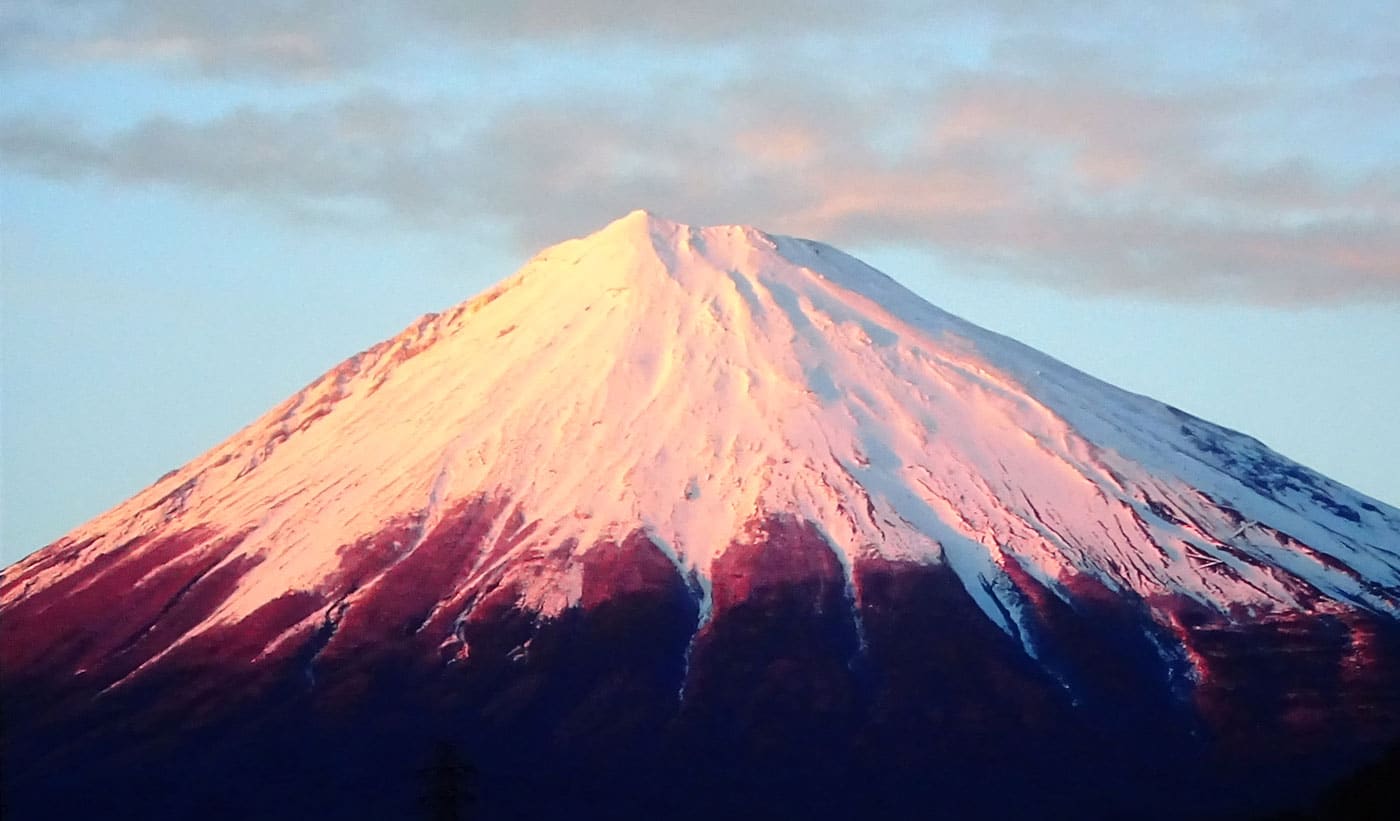 As we so, as spectators, peering out from the veiled darkness of the film room, at the illuminated screen, we are presented with an extension of the boundaries of photography and film. Moments of silence paired with those of movement.
As we so, as spectators, peering out from the veiled darkness of the film room, at the illuminated screen, we are presented with an extension of the boundaries of photography and film. Moments of silence paired with those of movement.
Additions, which precisely pinpoint a unique area, where film, photography and culture of imagination meet and connect. Following the climb to the peak of the mountain (ascent), a story, which equally zigzags over history and experiences of Mary and Hiroshi. The cultural backgrounds they represent and through which we are taken through their voices, their stories, memories and reflections, in 'Ascent' in such a way that we transcend the 'here and now' (ascent).
From Edo-era ukiyo-e prints to World War II, from Western imperialism to contemporary tourism. From the early period of photography to a present where everything is captured in images. From staged to ad hoc. From a surprising image of the Friesian black-and-white pedigree cow in front of Mount Fuji, to double clichés of salmon-pink tulips or the so celebrated icon that refers to Vincent Van Gogh in everything. The Sunflower in a sea of yellow in front of Mount Fuji. Which brings us back to the woodcuts, Hokusai's ukiyo-e prints in Prussian Blue. A journey of 1 hour and 17 minutes: 1 mountain in 150 years and some more or less accidental contrasts and connections between the Netherlands and Japan... or more broadly, the influence of the East and the West on each other.
Topicality
As well as an immersion, it is also a questioning. As topical as it is urgent. For how do we deal with fact and fiction? What is the reality of photography: documentary, journalistic, historical? A report, staged, arranged. How subjective is the story and who is in charge? Who determines the interpretation of the images presented? Besides their visual eloquence, what is their (lasting) meaning? What does the mountain or mountain film stand for?
All this on the basis of that one unyielding mountain, a dormant volcano, which has taken its rest since its last eruption in 1708. With a warning inscribed in the storyline: 'On the surface everything seems pais and peaceful, but underneath, I feel the tension rising and the cracks opening. At least one expert predicts an eruption in the near future...'
Subtitles
One point to note is how sometimes subtitles are inserted, and how annoying this is at times, in a near-perfect combination of picture and sound. If the bilingual and two-part voiceover of the characters follow each other in rapid succession, there is an accumulation in the subtitles of Hiroshi and Mary's voices. Necessarily, in the process, Japanese is rendered in both English and Dutch lines of text. All the cinematic ingenuity of 'Ascent' then suddenly threatens to drown for a moment at the bottom edge of the picture. In my view, this detracts a little from the experience of the work.
Fortunately, the auditorium is not overcrowded, but how annoying is it when you don't have an unobstructed view of the screen or worse of the lines of text flying by, at the bottom of the screen? You miss a made connections because you don't master Japanese?
Something like this then raises the question of how an audiovisual work - a 77-minute film - should be classified, in terms of discipline. The work under what conditions and with what facilities, can be shown? This conflict will not only arise at Museum De Pont, where just last year the new extension became available. A wing, precisely for showing audiovisual visual material in dedicated video rooms, in 'black box setting' where daylight, unlike in the rest of the museum, is excluded.
Adhesive look
Tan's artworks address the question of how we look - both the way our gaze attaches itself to photographs and the way we look through those photographs at the world that surrounds us. They also deal with the effect, with which these images - like mirrors - ignite memories, sometimes seeming to look back at us. They make us question again, remember, relive. She makes us take a stand again so that we have to redefine our perspective.
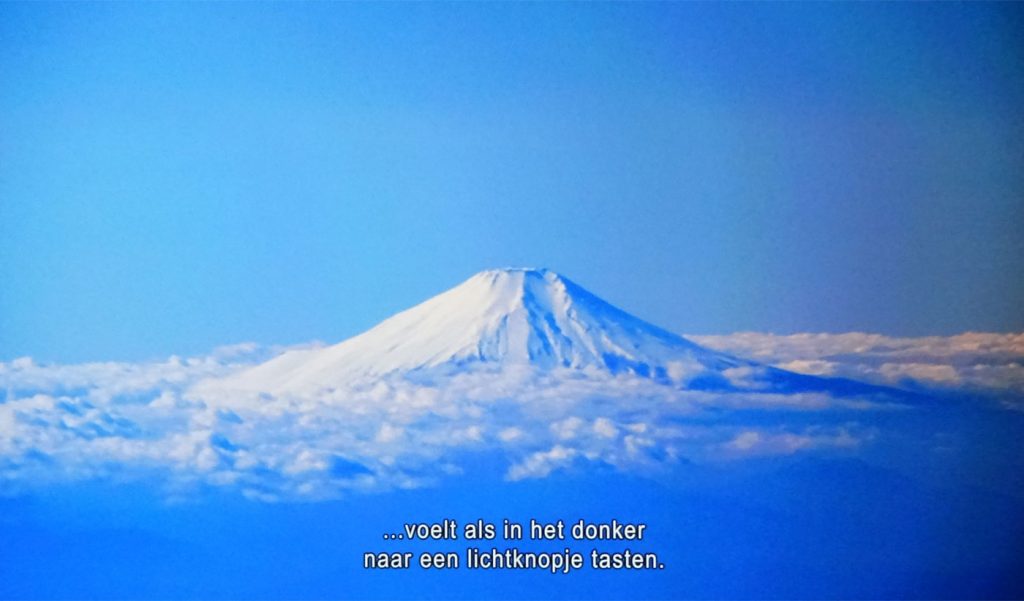 How all this works is best experienced for yourself. How suggestively image and sound interact, how quickly you take a storyline for granted and follow it... How seductive this process and how temporary and timeless images are. Even if you think they make an indelible impression on you... They dissipate like time itself. Stilling and unsettling:"... uneasy as in the dark, groping for the light switch...".
How all this works is best experienced for yourself. How suggestively image and sound interact, how quickly you take a storyline for granted and follow it... How seductive this process and how temporary and timeless images are. Even if you think they make an indelible impression on you... They dissipate like time itself. Stilling and unsettling:"... uneasy as in the dark, groping for the light switch...".
On view until 11 June 2017 at De Pont Museum, Tilburg.
To the De Pont Museum
Set up as a 'museum of contemporary art', the museum is well worth a visit. The museum is celebrating its anniversary this year and has built up a leading collection of contemporary art over the past 25 years under the leadership of its director Hendrik Driessen. The museum has superb accommodation; the wool spinning mill, converted into a museum with its industrial shed roof, is an experience, in which daylight pours lavishly over the works of art on display.
www.depont.nl
Fiona Tan (Pekan Baru, Indonesia 1966) trained at the Gerrit Rietveld Academy and the Rijksacademie in Amsterdam. Born in Indonesia and raised in Australia. Has lived and worked in the Netherlands for over 25 years. Fiona Tan works mainly with lens-based media, (i.e. anything with a lens). She is best known for her expertly made video and film installations, in explorations of memory, time, history and in which the role of the visual is central.
In 2009, she was selected to represent the Netherlands at the 53rd Venice Biennale with 'Disorient'. Fiona Tan is a highly prolific artist and her work is widely shown internationally. For instance, a recent retrospective of her current work was shown at the MMK in Frankfurt in late 2016 and, of course, in the same period, the presentation of 'Ascent' at the Izu Photo Museum at the foot of Mount Fuji, in Shizuoka Prefecture, Japan.
www.fionatan.nl
